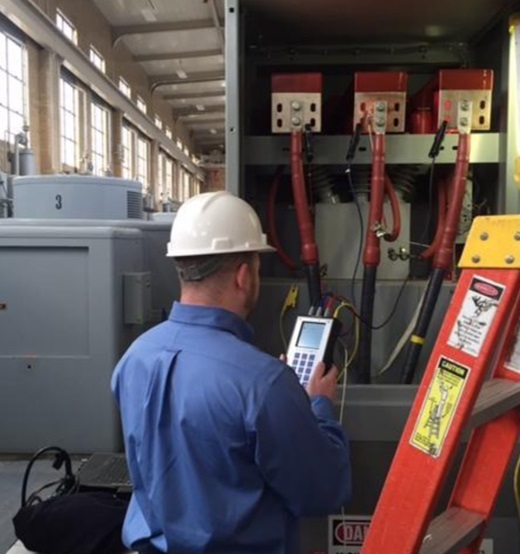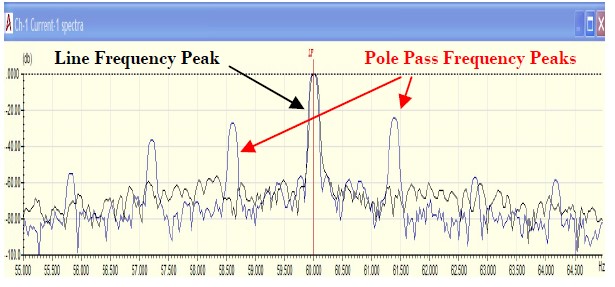Electrical Signature analysis (eSA)
Electrical Signature Analysis (ESA) is an on-line test method where voltage and current waveforms are captured while the motor system is running and then, via a Fast Fourier Transform (FFT), a spectral analysis is done by the provided software. From this FFT, faults related to incoming power, the control circuit, the motor itself, and the driven load are detected
and can then be trended for Condition Based Maintenance/Predictive Maintenance purposes. Our ESA instrument is handheld, portable and battery operated.
The key difference between Motor Current Signature Analysis (MCSA) and Electrical Signature Analysis (ESA) is with MCSA the
FFT is done on the current waveform only and not the voltage. This makes it more difficult to easily and quickly distinguish incoming power related problems from motor and driven load problems. With ESA you have both the current and the voltage FFT to see on the same screen. So it is just a matter of comparing the Voltage and Current FFT spectra to determine the source of the fault.
All ESA analysis systems require motor nameplate information of voltage, running speed, full load current, and horsepower (or kW). Additionally, optional information such as rotor bar and stator slot count, bearing numbers, and information for driven load components, such as blade count for a fan or tooth count for a gear box application can be entered for a more detailed and accurate analysis.
Energized on-line testing will provide valuable information for AC induction and DC motors, generators, wound rotor motors, synchronous motors, machine tool motors, etc. Since ESA is new to many people, the chart below illustrates ESA’s evaluation capabilities of the major components within a motor system.
We, Vibsys Technical Services, are capable of performing Electrical Signature Analysis study to identify the electrical system anomalies at the very early stage itself; hence Unplanned downtime and maintenance costs could be significantly reduced.


Applications for ESA
· AC/DC Motors
· Motor Drive Applications
· Generators/Alternators
· Traction Motors
· Machine Tool Motors
· Gearboxes
· Pumps and Fans
· For Reliability
· For Commissioning
· For Troubleshooting
Analysis of Incoming Power
· Power Factor
· Current & Voltage unbalance
· RMS voltage to nameplate
· Voltage and Current Peak and Crest Factor
· Phase Impedance
· Power (Apparent, Real and Reactive)
· Total Harmonic Distortion (Voltage and Current)
Mechanical System can also be analyzed
· Direct Connected
· Gear Box
· Belt drives
· Fan blade
· Impeller
